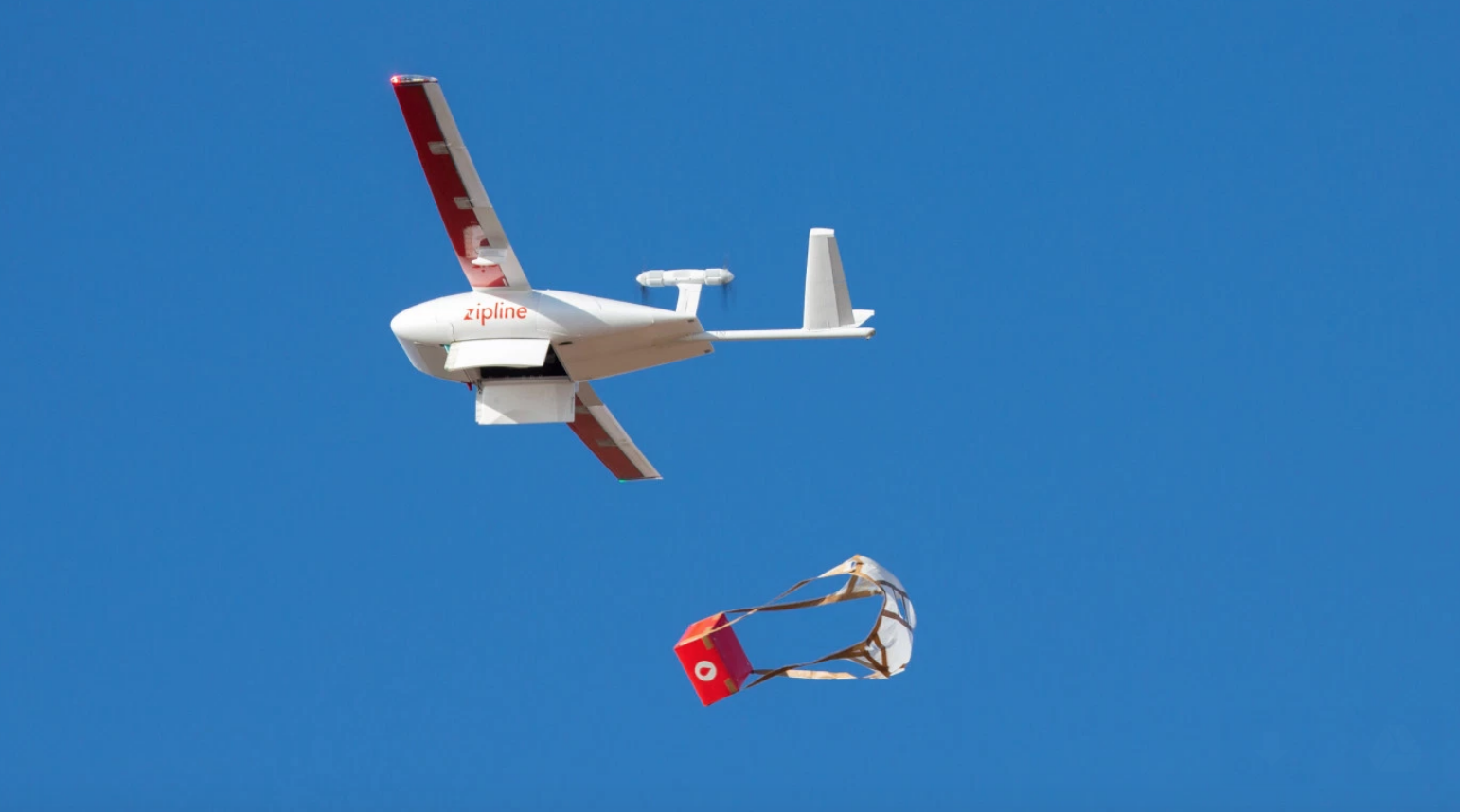
Featured image: Disruptions.io
By Isaac Wilks
An order came in from a rural hospital, and flashed across a computer screen. Within seconds, a packet of blood was removed from a massive floor-to-ceiling refrigerator. It was placed into a protective bubble-wrap swaddle and shut into a sturdy cardboard box, paper parachute tucked in on top. A technician carried the box outside and under a hangar, shaking it to test its durability. She placed it into the open maw of the fuselage of a waiting drone mounted to the rail of a catapult launcher, and shut the drone’s belly doors. Another technician fixed a set of wings to the top of the drone, before circling it with a watching eye and testing hand. The launchway was cleared, flight clearance obtained, and preset flight pattern selected. And suddenly, at the press of a button and the metallic whirr of the catapult, the drone was flung airborne, speeding towards the midday sun. I looked down at the timer on my phone. In the span of four minutes and five seconds, a life was possibly saved.
The western Rwanda distribution center of Zipline, a startup that uses drones to deliver blood and vital medical supplies to hospitals, is around an hour south of Kigali, near the city of Muhanga. It is one of Zipline’s two distribution centers in the country, where drones are serviced, launched, and monitored. Founded in Half Moon Bay, California, in 2014, the company has in just a few years built the most reliable and extensive drone delivery network in the world.
Though the logistics are acutely complex—the drones must be precisely programmed to come within centimeters of a catcher hook in order to land, for example—the model is quite simple: a hospital sends an order for blood, plasma, or medicine, to the distribution center, via an app such as WhatsApp or Gmail. Upon receiving the message, the center fills a package with the order and places it in a drone, which is programmed with a flight path to the hospital in question. The drone is launched, and flies to its destination. Once it arrives, it flies over the hospital and drops its package, which slowly parachutes down to a waiting hospital staff member. The drone then returns to the distribution center and is plucked from the air by a hook. All parts in the operation, save the package itself, are reusable and modular. Order, launch, deliver, land, repeat.
At the time of writing, Zipline had recently launched operations in Ghana, and had completed 14,645 successful deliveries (multiple deliveries occur every hour of operations). Their delivery network covers an estimated 13,000,000 potential patients, and they average around 500 deliveries a day. They have reduced what was once around a 5-hour blood delivery by truck over shoddy roads, to an average of 30 minutes.
Behind these stunning numbers, there is, of course, a human side. On December 21st, 2016, the company saved its first life. Ghislane Ihimbazwe, a Rwandan girl, was rehabilitated with a critical shipment of two units of blood from a Zipline drone. Today, she is five years old.
Isaac Wilks is a sophomore in Pauli Murray College. Contact him at isaac.wilks@yale.edu.